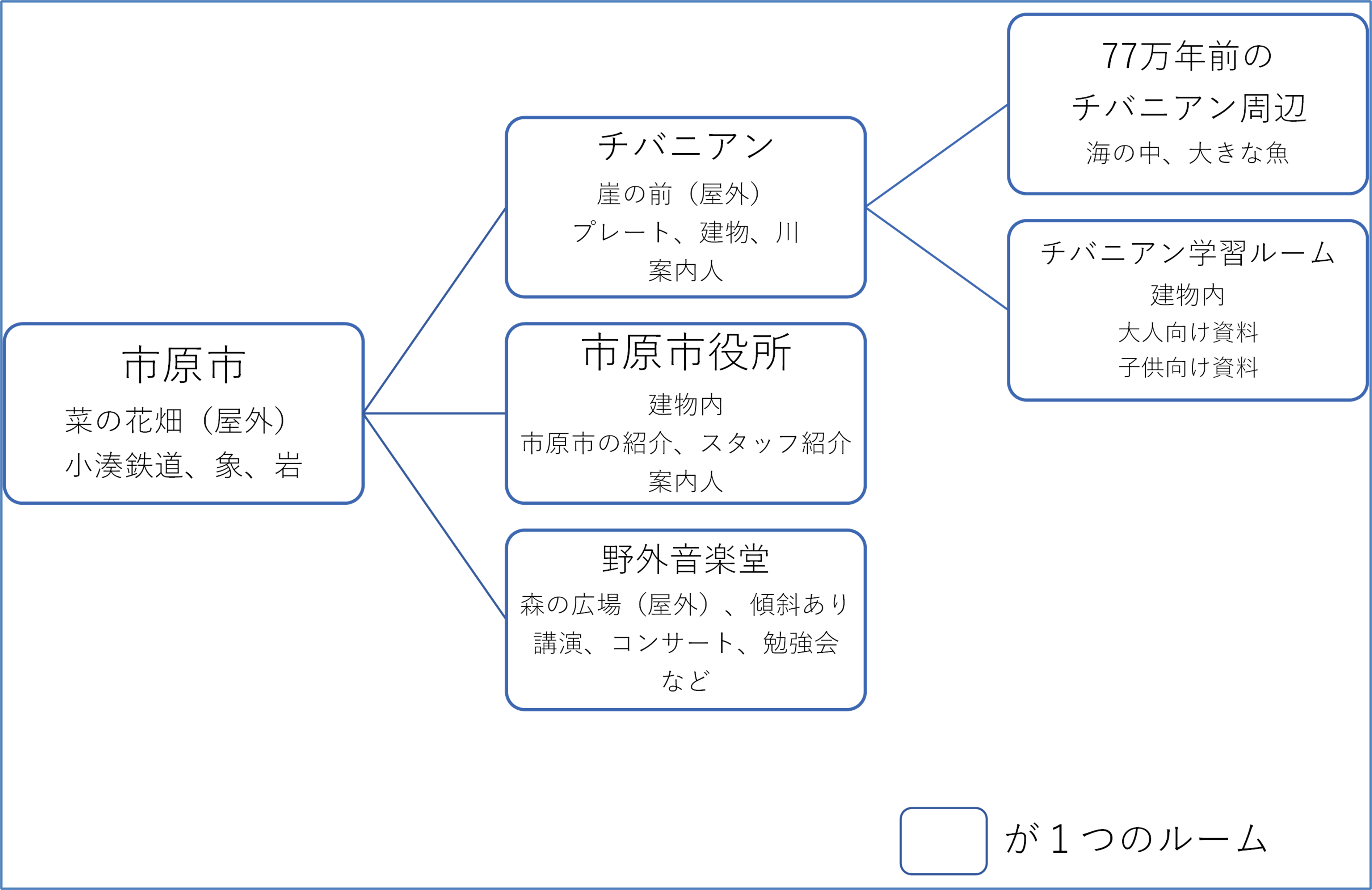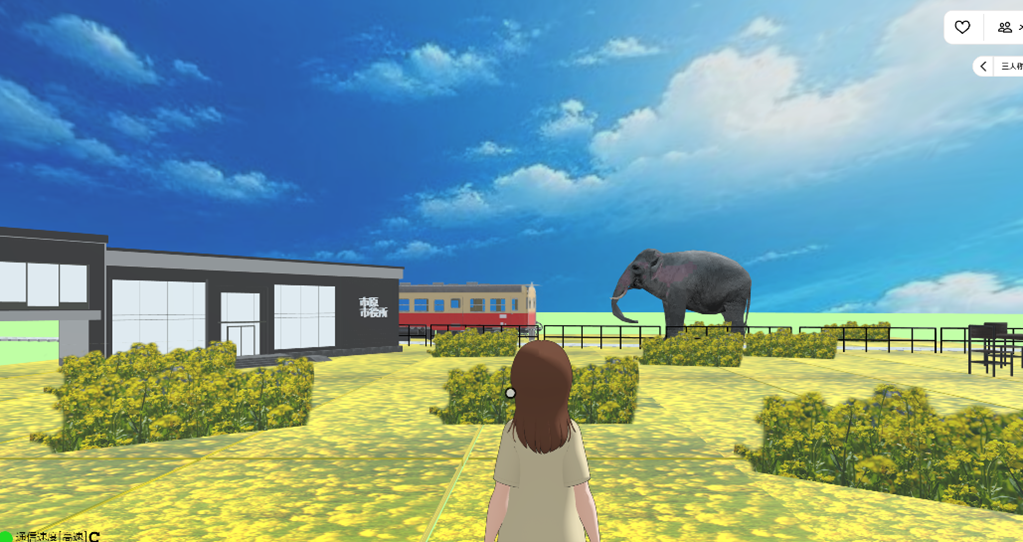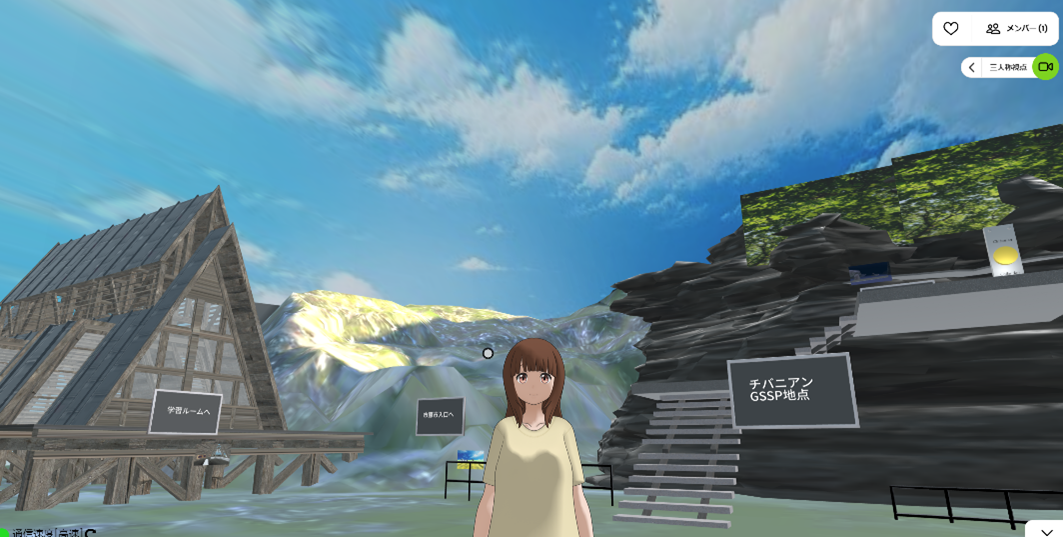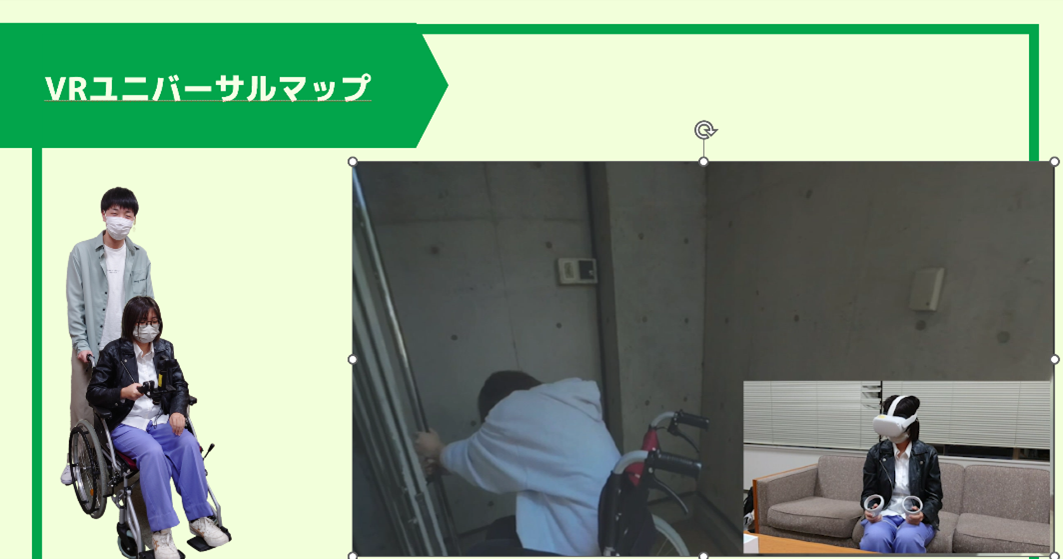2024年7月2日
Case study of metaverse education and experiments and analysis on major platforms. Report of results.
Research Director: Mitsunobu Kamata (Professor, Faculty of Humanities and Social Sciences)
1. Overview of research findings
(a) Construction of the official metaverse of Ichihara City, Chiba Prefecture through industry-academia-government collaboration Ichihara City, Chiba Prefecture, NTT East, and Kamata's seminar have constructed the official metaverse of Ichihara City through industry-academia-government collaboration. In this project, NTT XR's "DOOR" is used as the metaverse platform. In this initiative, Kamata and volunteer students from the Kamata seminar are in charge of developing the metaverse space, and NTT East is providing technical support. Ichihara City is providing information about the Chibanian and Ichihara City.
Specifically, by February, the creation of a metaverse space for Ichihara City, the Chibanian, and the surrounding area of the 770,000-year-old Chibanian was completed. This allows Chibanian materials to be exhibited in the metaverse, enabling users to learn and experience in a virtual space (Figures 1, 2, 3). By April, a metaverse space that will serve as a city hall window will also be created, allowing citizens to access government services through the metaverse.
A press conference by the mayor is scheduled for mid-April, where the progress and results of the project will be widely reported. The media announcement will be an opportunity to raise interest in the project and to widely publicize Ichihara City's digitalization efforts.
The ultimate goal of this project is to promote administrative digital transformation and make administrative guidance and procedures possible on the metaverse. This aims to provide new forms of administrative services to citizens and increase their convenience of access. It is expected that through the metaverse, citizens will be able to easily use administrative services from anywhere, and as digitalization advances, Ichihara City's administrative services will undergo major transformation. This project is an innovative attempt in the provision of public services using technology, and will serve as an opportunity to position Ichihara City as a pioneer in digital transformation. This initiative, which utilizes the potential of the metaverse, is a model that other municipalities can refer to and is of great significance in a society where digitalization is advancing.

Figure 1. Overall image of Ichihara City Metaverse

Figure 2: The entrance room to Ichihara City, created with "DOOR"

Figure 3: Chibanian GSSP site room created with "DOOR"
A presentation on the theme of "The History of the Metaverse" is scheduled to be given at the 3rd Joint Study Group of the Chiba Prefecture DX Promotion Council's DX Literacy Improvement Subcommittee, to be held on February 20, 2024.
(b) Development of a metaverse (VR) application and content creation for the "Universal Campus Map Creation Project" (student activities, application for alumni scholarship research)
We are investigating routes for wheelchair users on campus and creating VR content based on the results. The purpose of this project is to understand the difficulties wheelchair users face when moving around campus and to propose solutions. The VR content is created using the application development software Unity, the HMD Meta Quest3, and the 180° stereoscopic camera Vuze XR. This VR content allows users to freely explore a virtual campus of the University of Commerce. The controls are similar to those of video games and are intuitive and easy to understand. In addition, 180° stereoscopic images are used to allow users to experience the campus from the perspective of an actual wheelchair user. (Figure 4)
Through this VR experience, we hope to deepen understanding of the everyday difficulties faced by wheelchair users and to raise awareness of the need for barrier-free access on campus. In addition, by utilizing VR technology, we aim to provide information to many people in a visual and interactive format, drawing out greater interest and curiosity. This project is an innovative attempt that combines technology with the resolution of social issues. We hope that the production of VR content will raise awareness of barrier-free access, inspire more people to empathize, and inspire them to take action.

Figure 4. Wearing the HMD and viewing 180-degree stereoscopic images
(c) Research and experiments on educational methods using the metaverse
Minecraft Education Edition is a version of Minecraft specifically designed for educational purposes, and can be used for a wide range of educational activities, especially for elementary and junior high school students. This platform allows for a variety of educational approaches, such as STEM education, learning about history and culture, and teamwork and collaboration. In particular, in history and culture studies, recreating different cultures and historical buildings can attract students' interest and help them understand the content more deeply. In addition, the multiplayer mode can help students develop cooperation and teamwork skills.
In order to verify how these educational methods would work in an actual educational setting, we conducted an educational experiment in which students were treated as elementary school students in a seminar. As a result, it became clear that it took time for students to get used to the operation method. It was also found that it was difficult for a single teacher to handle it, and that a classmate who is familiar with games should teach other students and children. Furthermore, when multiple people work together, it takes more time to progress with the project.
This experiment shows that in order to effectively incorporate Minecraft Education Edition into education, proper advance preparation, cooperation between students, and support from teachers are important. Furthermore, by familiarizing students with the platform, it is possible to maximize its educational potential. By utilizing such educational tools, students are given the opportunity to try new forms of learning and develop their creativity and collaboration skills. It is expected that the use of Minecraft in educational settings will further increase in the future, improving the quality of education.

Figure 5 Minecraft Education Edition
2. Books, papers, academic presentations, etc.
[Paper (peer reviewed)]
Mitsunobu Kamata, "Proposal of a method for playing 180-degree stereoscopic videos in virtual space and VR content", International Association of ICT Research Research Journal, Vol. 3, No. 1, pp. 11-15, 2024